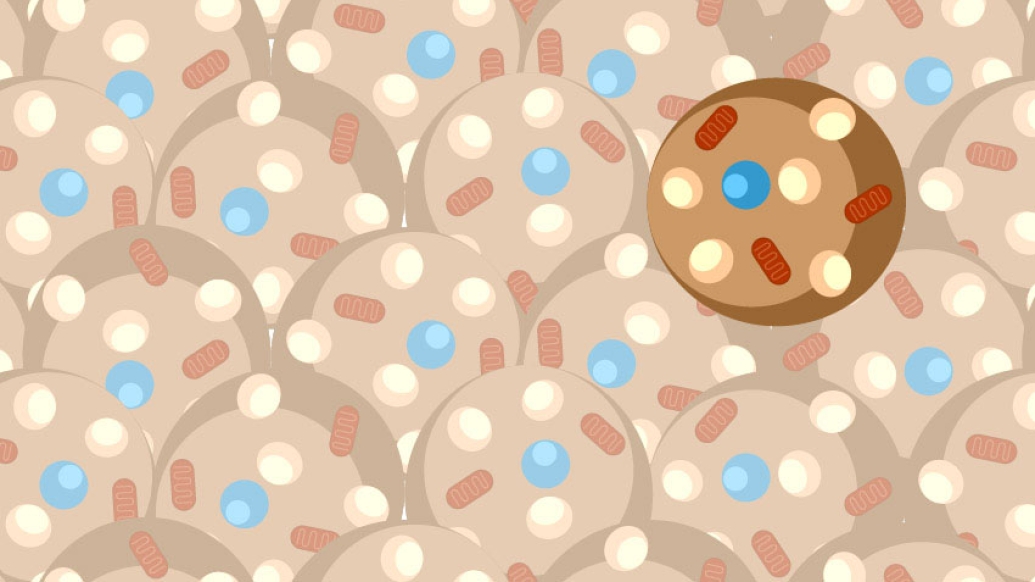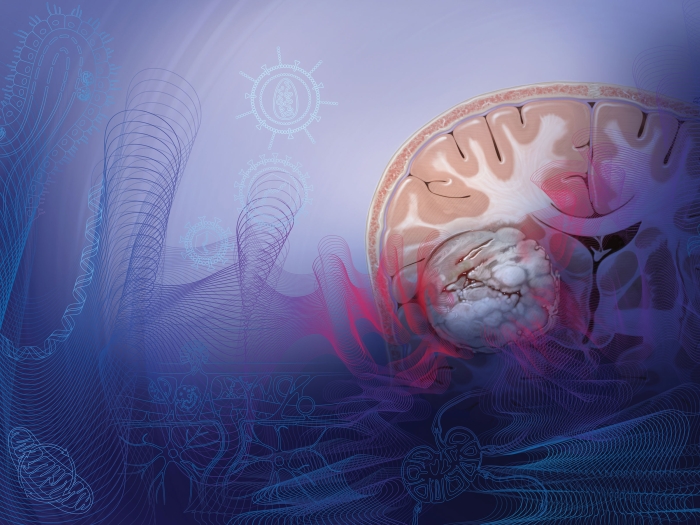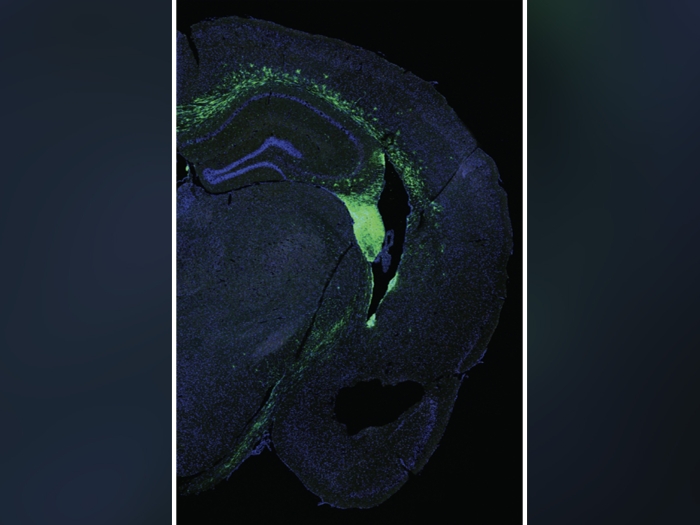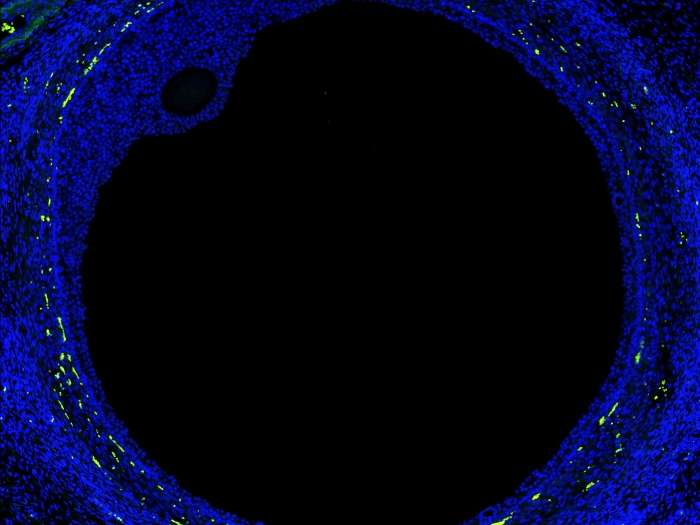Two Michigan researchers make major inroads into the biology of brown fat and its implications for weight loss and obesity-related diseases
11:00 AM
Author |

In recent years, brown fat has garnered attention as the so-called good fat that can protect against obesity and its associated health risks, like cardiovascular disease and diabetes. Two separate major studies, one led by Liangyou Rui, Ph.D. and one by Ling Qi, Ph.D., both with the department of molecular & integrative physiology, help explain brown fat's properties.
Brown fat and the brain
Located in small pockets throughout the body, most mammals use brown fat (and its closely related cousin beige fat) to stay warm. "In mice and humans, if you have more brown or beige fat, you are more protected from metabolic disease," says Rui, the Louis G. D'Alecy Collegiate Professor of physiology at U-M Medical School, whose lab studies the molecular and physiological mechanisms of obesity, diabetes and fatty liver disease. In a new study published in Nature Communications, Rui, first author Lin Jiang, Ph.D., and their colleagues reveal a pathway by which the hormone leptin contributes to weight loss.
Leptin regulates body weight by controlling appetite and energy expenditure, but exactly how has been a mystery. What is known, says Rui, is that leptin activates brown and beige fat. The new study elucidates a molecular accelerator of leptin action in the brain called Sh2b1. His team has found that Sh2b1 in the hypothalamus, an important brain region controlling body temperature and hunger among other functions, promotes the stimulation of the sympathetic nervous system. The sympathetic nervous system sends signals to brown and beige fat to activate it, thus maintaining body weight and metabolism.
The team demonstrated this proof-of-principle by creating two mouse models. Mice that lacked the Sh2b1 gene in the leptin receptor neurons "had an incredibly reduced sympathetic drive to the brown and beige fat and reduced capability to promote energy expenditure," says Rui. This reduced the ability of brown fat to be metabolized into heat, lowering the mice's core body temperature. What's more, the mice also developed obesity, insulin resistance and a fatty liver. In contrast, mice with extra expression of Sh2b1 in their brains were protected from obesity.
Like Podcasts? Add the Michigan Medicine News Break to your Alexa-enabled device or subscribe for updates on iTunes, Google Play and Stitcher.
"No one knew that Sh2b1 in the brain controls the sympathetic nervous system or was required for leptin to activate brown fat to increase energy expenditure," notes Rui. As for how this finding could be applied to humans, he says the hope is to eventually find a way to increase expression of Sh2b1 or its ability to enhance leptin signaling and fat burning.
Other U-M authors contributing to this paper include: Haoran Su, Xiaoyin Wu, Hong Shen, Min-Hyun Kim, Yuan Li, Martin G. Myers Jr, and Chung Owyang.
Brown fat and the cell
Brown fat gets its color from high amounts of iron-containing mitochondria, unlike the standard white fat linked to obesity. A team led by Qi, a professor of molecular & integrative physiology and internal medicine at U-M Medical School has been studying how mitochondria, the power plant of the cell, and another cellular structure called the endoplasmic reticulum (ER), which is involved in the production of proteins and lipids, interact inside brown fat cells.
In particular, they've studied the role of a protein complex involved in a process called ER-associated protein degradation, or ERAD. Simply put, ERAD is the process of removing and destroying misfolded proteins, like taking out the trash out of the ER.
"Everyone thought that ERAD was just part of the general cellular response when cells are undergoing ER stress," says Qi. "We've shown over the past six years that it plays a fundamental role in health and disease."
In a new study, published in Science, Qi along with first authors Zhangsen Zhou, Ph.D., Mauricio Torres, Ph.D., and their colleagues demonstrate how an ERAD protein complex affects the proper function of mitochondria.
Typically, the ER and mitochondria have ongoing interaction at touch points called mitochondria-associated membranes. These points of contact mark areas for mitochondria to divide for the production of new mitochondria and for the exchange of other molecules such as lipids and calcium. The ER forms tubules that surround the mitochondria to get them ready for division.
Using state of the art 3D imaging, the researchers discovered what happens to mitochondria in brown fat that are missing part of an ERAD protein complex, called Sel1L-Hrd1, when exposed to cold.
"When you delete this complex in brown adipocytes, the mitochondria become elongated and enlarged," says Qi. The 3D image enabled them to view a previously unrecognized interaction between the mitochondria and the ER, with the mitochondria wrapping in a U-shape around the ER tubules.
MORE FROM THE LAB: Subscribe to our weekly newsletter
When the mice were placed in a cold environment, the ends of the outer membrane of the mitochondria folded back on itself, eventually fusing and completely enveloping the ER tubules. The result, says Qi, are abnormally large, misshapen, dysfunctional mitochondria.
"We showed that these mitochondria don't function normally and the mice become cold sensitive, their body temperature dropping very quickly," says Qi. In other words, without this ERAD protein complex, the brown fat is not being used to generate heat. Under a microscope, this dysfunctional brown fat had larger droplets of lipids than brown fat from mice with the protein complex intact.
"This is highly unexpected. The results here fundamentally change our understanding of ER-mitochondrial communication and further demonstrate the importance of an ER degradation complex in cell biology."
This paper also includes contributions from the following U-M authors: Christopher Halbrook, Françoise Van den Bergh, Rachel B. Reinert, Siwen Wang, Yingying Luo, Allen H. Hunter, Thomas H. Sanderson, Aaron Taylor, Costas A. Lyssiotis, Jun Wu and Daniel A. Beard.
Papers cited:
"Leptin receptor-expressing neuron Sh2b1 supports sympathetic nervous system and protects against obesity and metabolic disease, Nature Communications, DOI: 10.1038/s41467-020-15328-3
"Endoplasmic reticulum–associated degradation regulates mitochondrial dynamics in brown adipocytes", Science, DOI: 10.1126/science.aay2494

Explore a variety of healthcare news & stories by visiting the Health Lab home page for more articles.

Department of Communication at Michigan Medicine
Want top health & research news weekly? Sign up for Health Lab’s newsletters today!





